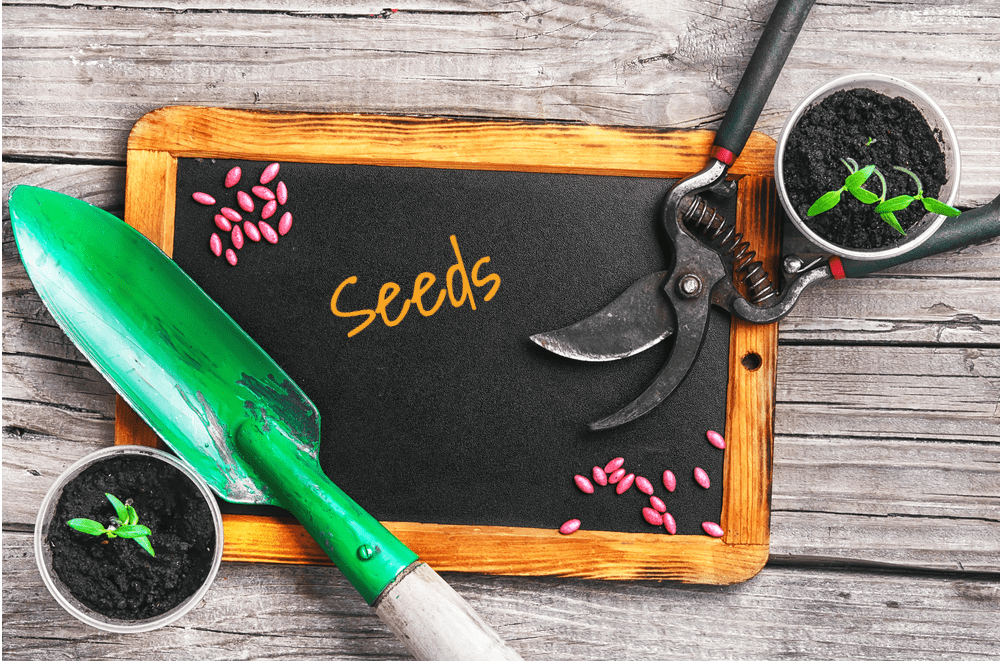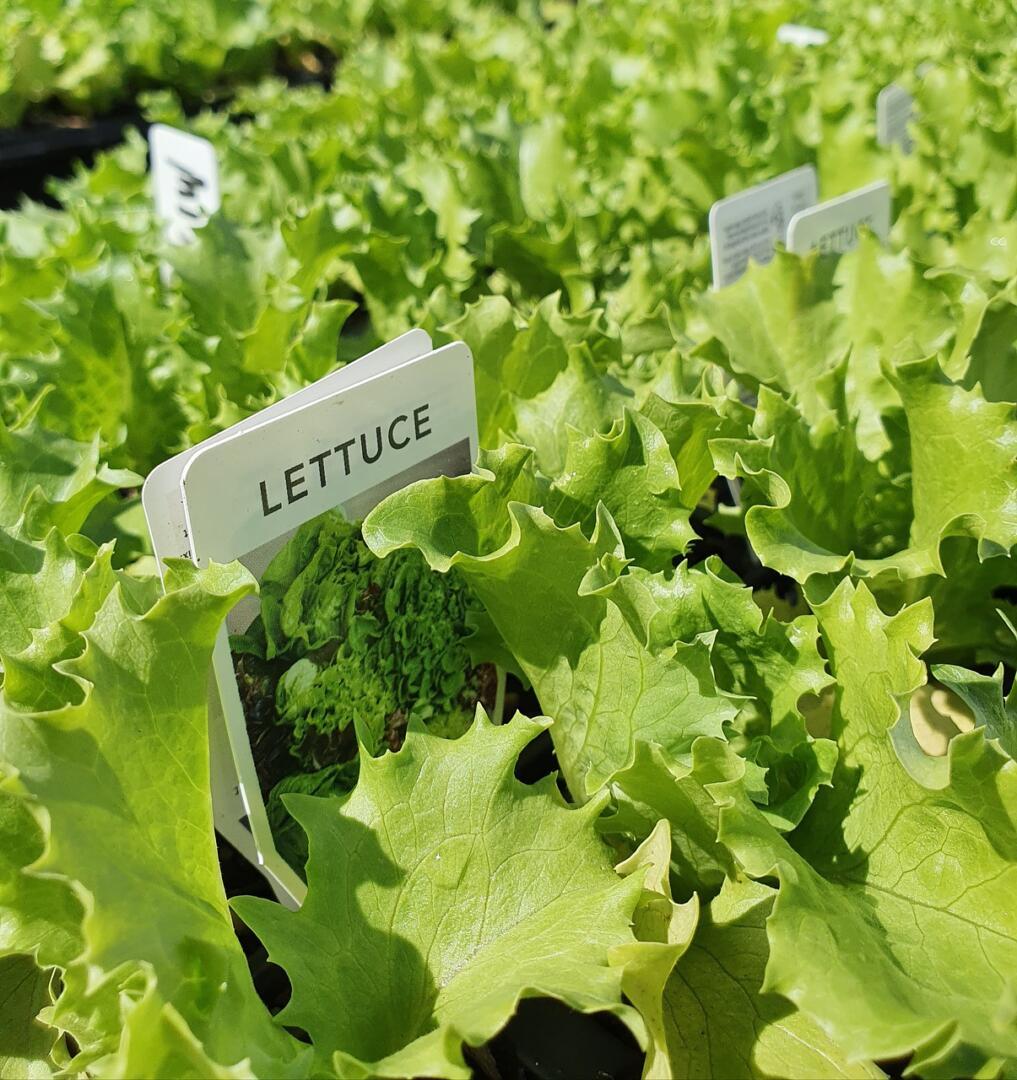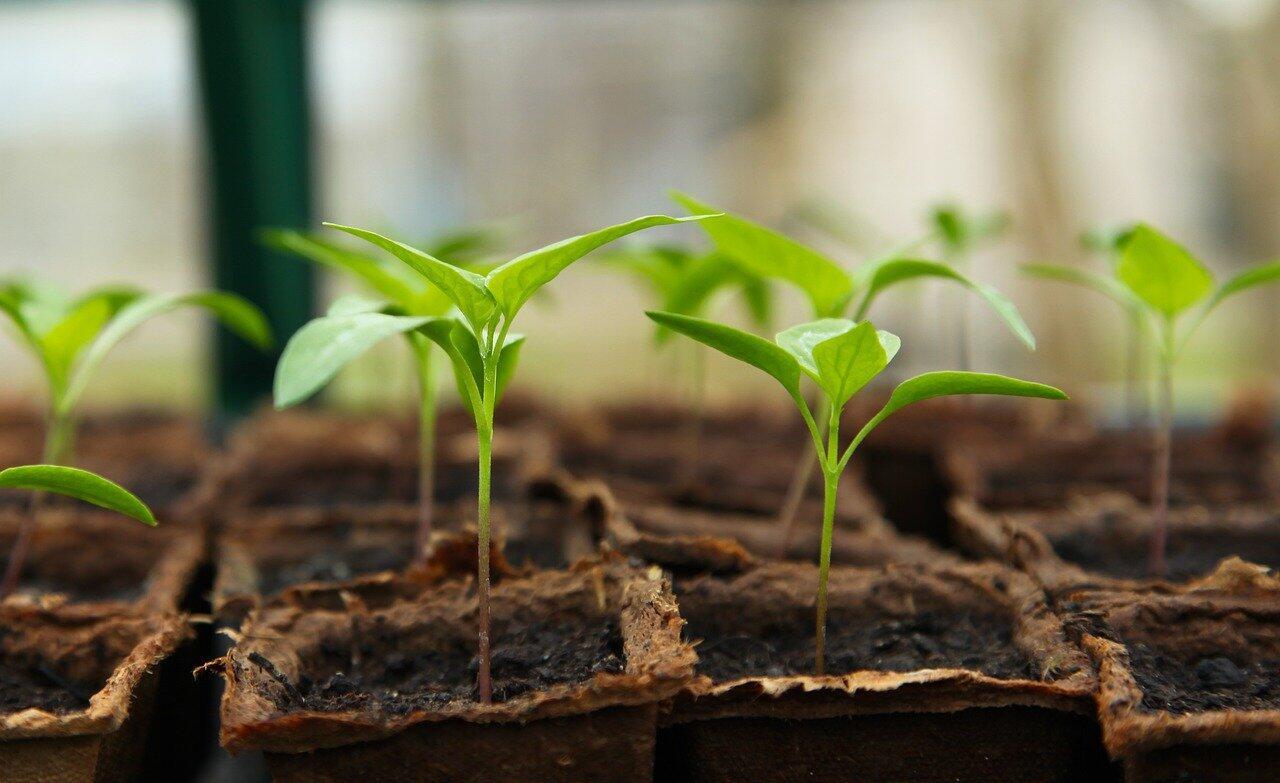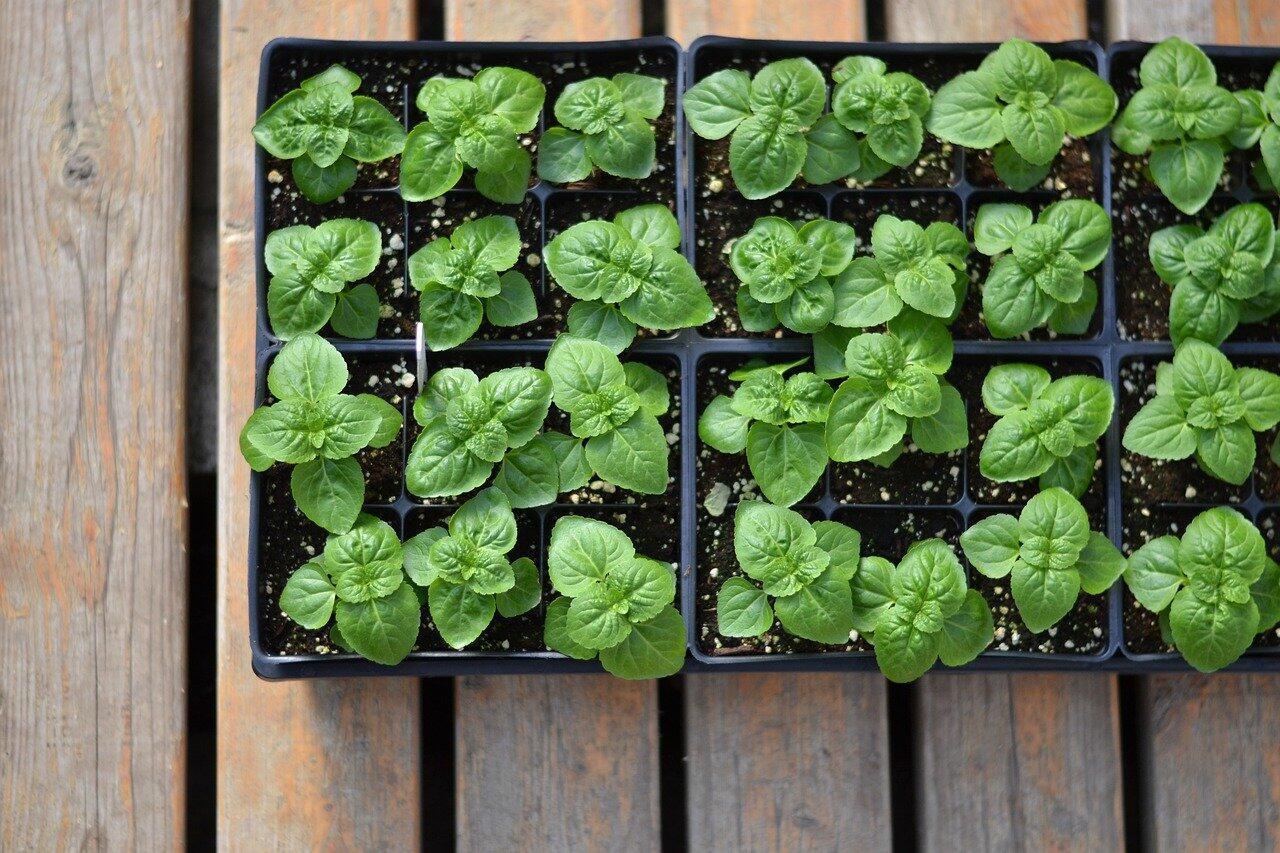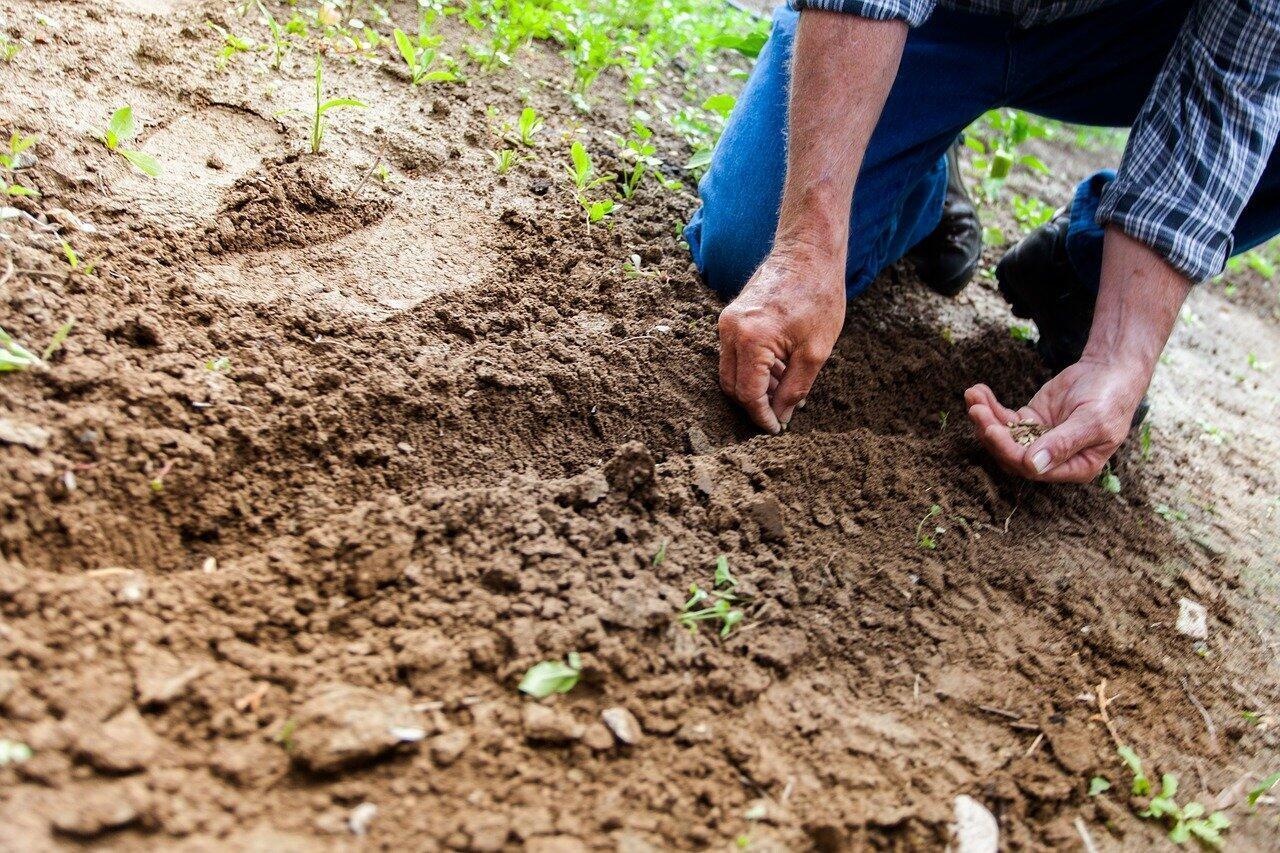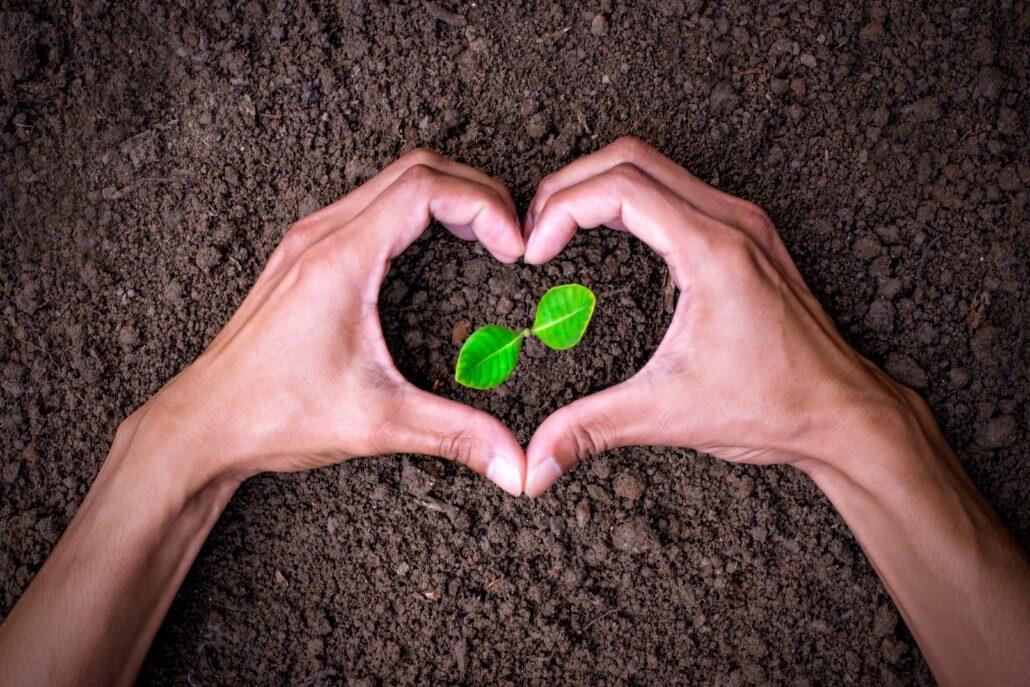While it’s quick and easy to buy seedlings to transplant, starting seeds indoors has several benefits for you – you can save a substantial amount of money, you have access to a much wider variety of plants and vegetables, you’ll know what’s going into your food, and you’ll have the satisfaction of watching your plants grow throughout its entire life cycle.
Knowing when to start your seeds is an important tool. Our average last frost date in the Lehigh Valley is April 30th. Remembering this date will help you when planning your planting. Beware though that there is always the potential for a later frost. Keep an eye on the weather as you are making plans with your seeding dates.
Starting Seeds
Almost any container with drainage holes can be used to start seeds, including milk or egg cartons, yogurt cups, and growing trays. When reusing containers, they need to be cleaned and sanitized, and have holes punched into the bottoms. You can also use biodegradable pots that you can easily plant directly in the garden when it is time.
Labeling
Don’t forget to label your seed pots as you go. Craft sticks, garden stakes, or plastic knives work well.
Medium
A good quality bagged seed-starting mix and compressed peat pellets are great for holding moisture and are free of sticks and debris. Avoid using potting soils or garden soils that can introduce disease or pests and can be too heavy for the fragility of the tiny seeds. Moisten the medium before filling any containers.
Moisture
Covering your containers with a clear, domed lid or plastic wrap helps to retain moisture and increase humidity during germination. After the seedlings emerge, remove the cover. Misting with a spray bottle, or bottom watering (adding water to the drainage tray) are good ways to keep the soil moist without disturbing these young seedlings. Check the moisture regularly to prevent the seeds or seedlings from drying out or from sitting in standing water.
Temperature
Optimal temperatures for geminating vary for each specific plant so check the seed packet for individual temperature needs. Once the seeds germinate, room temperatures of 70°-75°F will help most seedlings grow best. Warm weather, (frost sensitive) plants such as tomatoes, peppers and eggplant appreciate warmer soil conditions and would benefit from the use of a seed heating mat when you sow them inside.
Light
For best growth, seedlings need at least 14 hours of quality light per day. Even your sunniest window might not supply enough light to grow strong plants. This is when a grow light is ideal and an inexpensive option. If you are using a fluorescent fixture, a cool-tone, or mix of cool and warm-tone bulbs are recommended and will need to be situated 1-2″ above the seedlings. Grow lights can be placed further from seedlings, but if your seedlings look like they are stretching and reaching towards the light, the bulbs are too far away. Regular incandescent lightbulbs will not work and can result in the heat from the bulbs damaging your plants.
Circulation
Air circulation around seedlings can help prevent disease problems while strengthening seedlings. A fan on its low setting will create adequate airflow. Avoid aiming the fan directly at the seedlings as it will cause rapid drying of the soil. Instead, point it at the wall above the trays or containers of seedlings.
Fertilizer
If your seed starting mix does not contain nutrients, you should add a diluted amount of slow-release, organic, balanced fertilizer to the medium or use a liquid formula once the seedlings have true leaves, Balanced fertilizers have equal amounts of nitrogen, phosphorus, and potassium represented on the label as numbers with dashes between. Example: 20-20-20
Check the label for instructions on diluting the fertilizer, and the recommended frequency for seedlings and transplants.
Hardening Off
This is the process of introducing and acclimating your seedlings to the outdoor conditions in a slow manner. The hardening off process reduces stress which negatively impacts the plants overall performance and yield. Start by placing plants in a protected, shady area and progress to more sun over 7-10 days, Be sure to bring your plants inside at night, especially if temperatures drop below 45°F. After the 7-10 days, your plants will be ready for transplanting. Before transplanting, consider fertilizing with seaweed or kelp to further reduce plant stress. Transplant on a calm, cloudy day in the evening. Using row covers to buffer your plants from the wind and potential dips in temperature is also another idea to consider.


